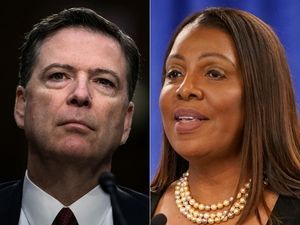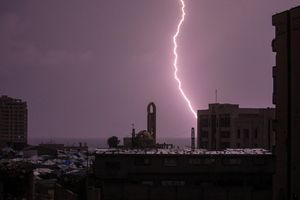 Many legal commentators believe that during the recently concluded term, the Supreme Court further empowered President Donald Trump. The court indeed issued a series of conservative rulings that align with Trump’s preferences. However, under Chief Justice John Roberts’ leadership, the court also carefully pursued a strategy to uphold the rule of law in the face of Trump’s unprecedented challenges.{vi2}
Many legal commentators believe that during the recently concluded term, the Supreme Court further empowered President Donald Trump. The court indeed issued a series of conservative rulings that align with Trump’s preferences. However, under Chief Justice John Roberts’ leadership, the court also carefully pursued a strategy to uphold the rule of law in the face of Trump’s unprecedented challenges.{vi2}
The court strategically chose its battles, upholding numerous lower court orders that blocked unlawful Trump initiatives. Simultaneously, the justices worked diligently to avoid a direct confrontation that might provoke Trump to openly defy a court ruling.{vi4}
Even its most controversial recent decision — ending the Trump-era practice of issuing nationwide injunctions against presidential actions — can be viewed as an effort to prevent lower courts from creating direct conflicts with the administration that could lead to a showdown the courts might lose. This interpretation suggests that Roberts aims to exercise careful judgment about when to confront Trump directly. His goal is to avoid a constitutional crisis that could undermine the judiciary’s power for generations to come.{vi6}
Let me be crystal clear: I strongly disagree with virtually all of the ideologically conservative decisions the court issued this term. (You can read my columns on each of them to understand why.) However, these decisions, flawed as they may be, were not the most crucial aspect of the Supreme Court’s role since Trump took office.{vi8}
No, since January 20, 2025, the court’s primary function has been to fight for the preservation of the rule of law. This fight cannot be won through bluster alone, for a specific constitutional reason: The Supreme Court lacks direct enforcement power and control over the purse strings. As Alexander Hamilton famously noted, it is “the least dangerous branch” — which also means it is the least powerful.{vi10}
Ultimately, the Supreme Court’s power stems solely from the executive branch’s compliance. If the president defies the courts, the only constitutional remedies available are congressional attempts to withhold funds (unlikely under this Congress) and impeachment (a long shot). Perhaps — one can only hope — millions of citizens would take to the streets to defend the rule of law. Maybe financial markets would plummet. But these are extreme scenarios, and their effectiveness is uncertain.{vi12}
Thus, the court’s job over the past six months has been to hold the line.{vi16}
It has done so — not resoundingly, but cautiously, as befits judges who aren’t politicians and lack a constituency to rely on.{vi18}
When lower courts blocked some of the president’s efforts to freeze federal grant money and fire career government employees, the Supreme Court largely upheld those orders. When District Judge James Boasberg ordered the Trump administration to “facilitate” the return of Kilmar Abrego Garcia, who had been deported to El Salvador without due process, the justices upheld the order — and he is now back in the U.S., albeit facing new criminal charges. When other detainees slated for deportation sought their day in court, the justices affirmed their due process rights.{vi20}
Of course, the court’s majority hasn’t opposed the Trump administration at every turn. Sometimes this has been due to technical legal reasons. But it’s also because Roberts ideally wants to avoid a situation where Trump directly defies a court order.{vi22}
If a confrontation must occur, Roberts and the other justices prefer it to be on an issue where the court’s legal and rhetorical power is at its peak. This means choosing an issue where the law clearly opposes Trump, all nine justices agree, and no foreign actors outside the court’s jurisdiction are necessary to implement the court’s judgment.{vi24}
During Trump’s second term, universal injunctions have revealed another worrisome attribute: They have allowed any district court judge in the country to create a nationwide, direct conflict with the administration. From Roberts’ and the justices’ perspective, this is akin to giving battlefield colonels the power to launch a major war. As the senior generals, the justices would prefer to make tactical and strategic decisions about when to confront the president — the most dangerous adversary they’ve ever faced. Ending universal injunctions gives them that discretion.{vi26}
The court also continued the partial restructuring of the administrative state — with a ruling in the emergency docket that appears to permit the president to fire even the heads of multi-member independent agencies.{vi28}
These decisions reflect ongoing trends in conservative jurisprudence. They aren’t fundamentally tied to the court’s broader project of preserving the rule of law. A fair assessment of the Supreme Court term should focus not only on these decisions but also on how well the court is addressing the most consequential issue: keeping the Constitution alive.{vi30}
The answer is that the court is doing reasonably well. It doesn’t need to win any awards. It just has to fulfill its role in the existential struggle to save democracy and the rule of law.{vi32}
Noah Feldman{vi36}
Noah Feldman is a Bloomberg Opinion columnist. The views expressed here are the writer’s own. — Ed.{vi40}
(Tribune Content Agency)










Most Commented